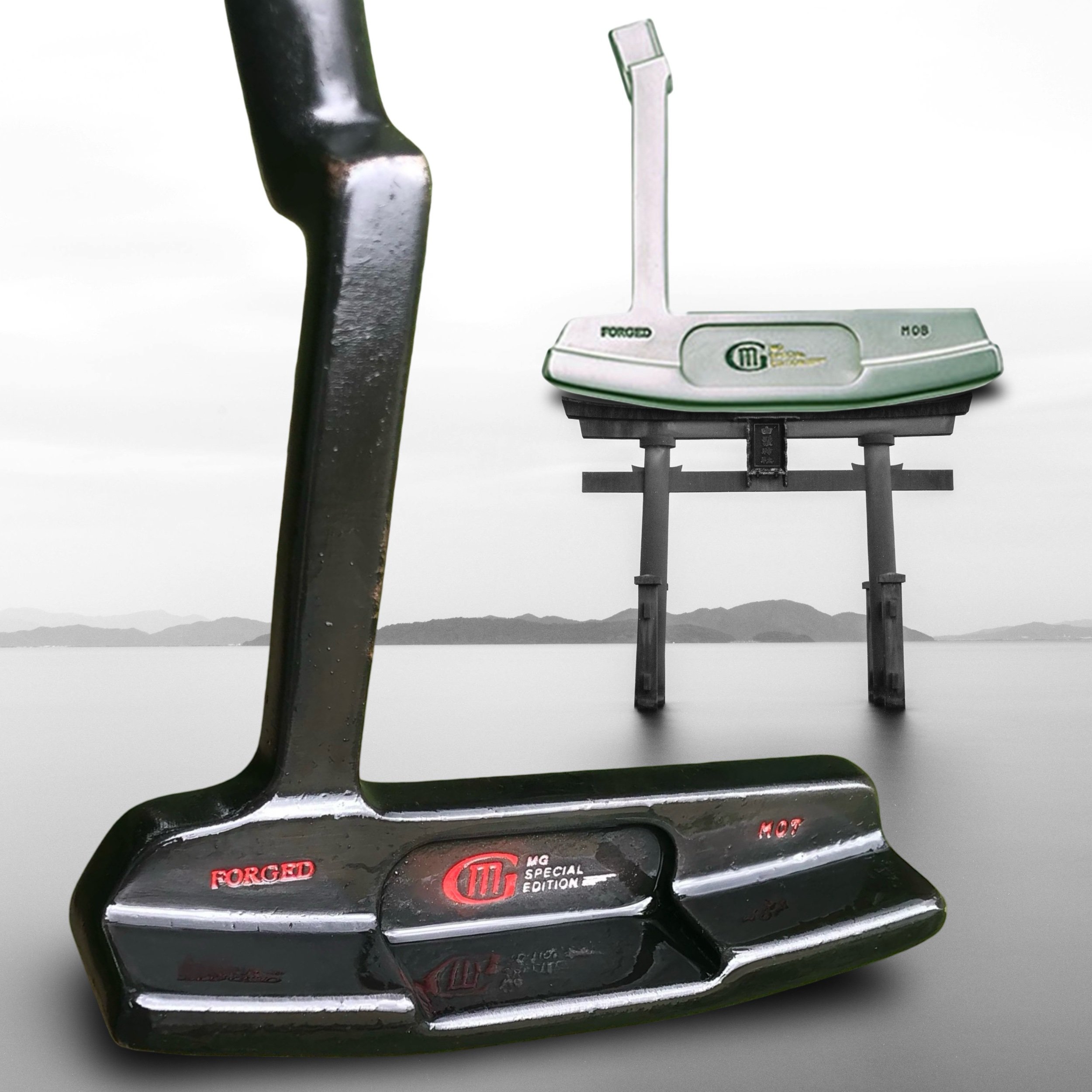 Image 1 of 8
Image 1 of 8

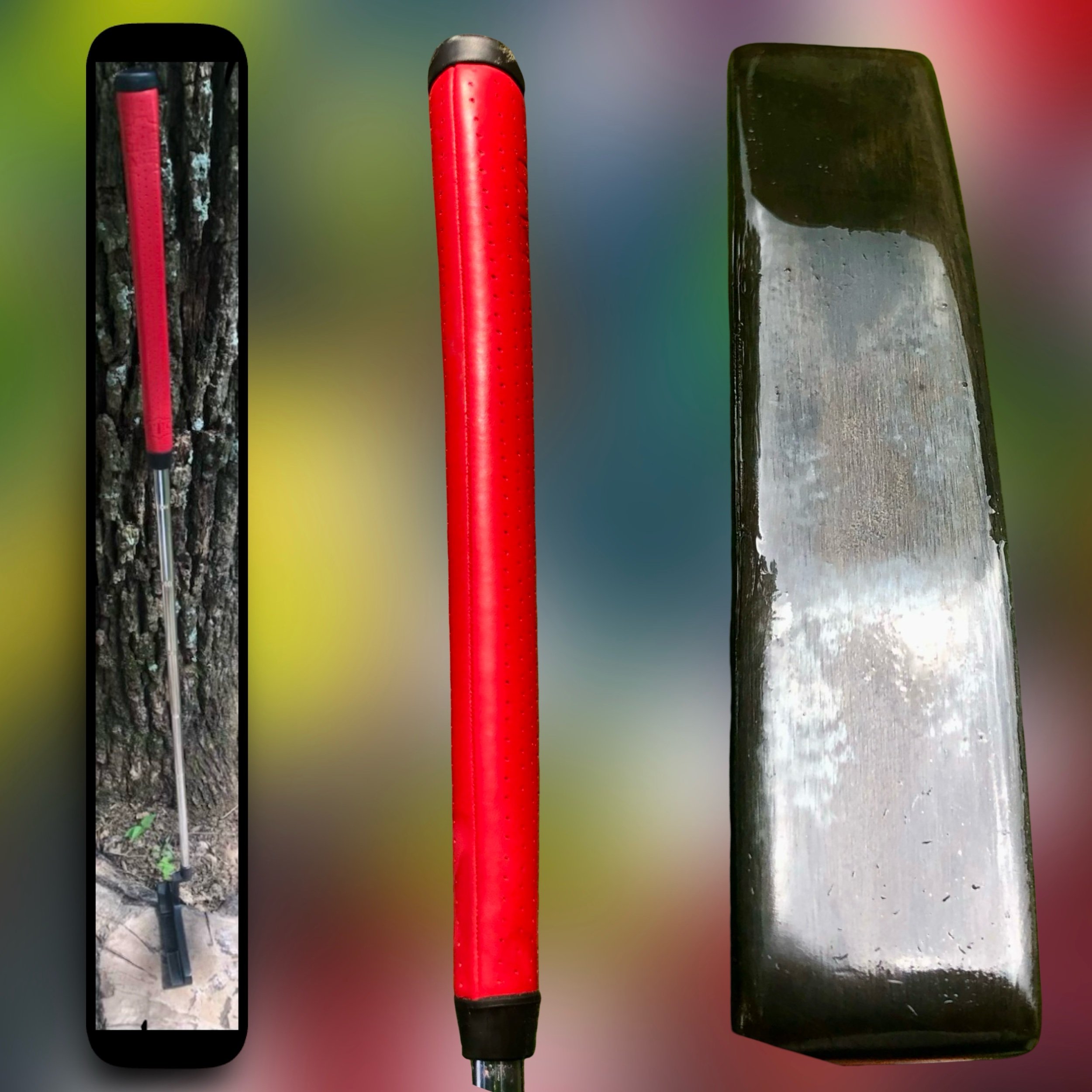 Image 2 of 8
Image 2 of 8

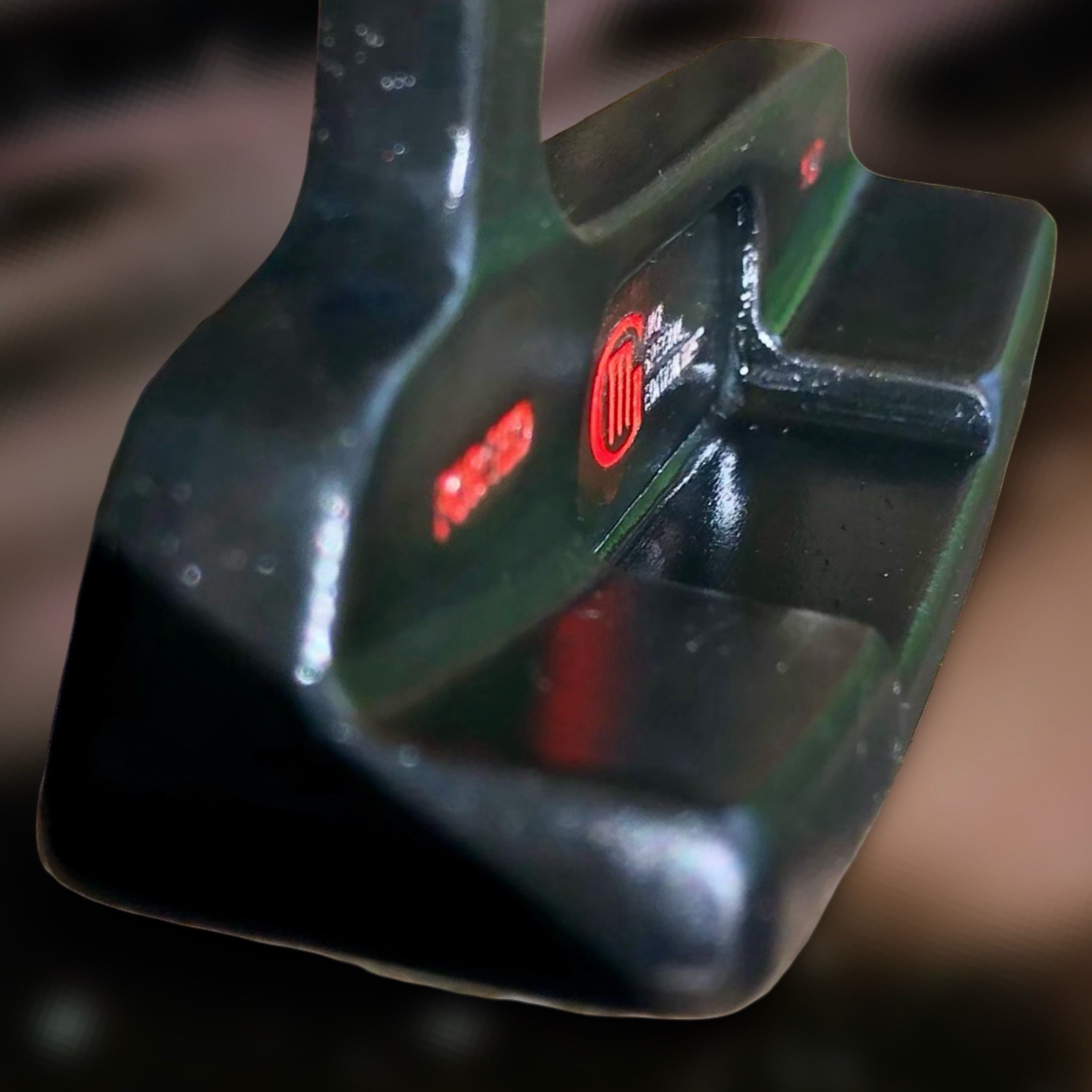 Image 3 of 8
Image 3 of 8

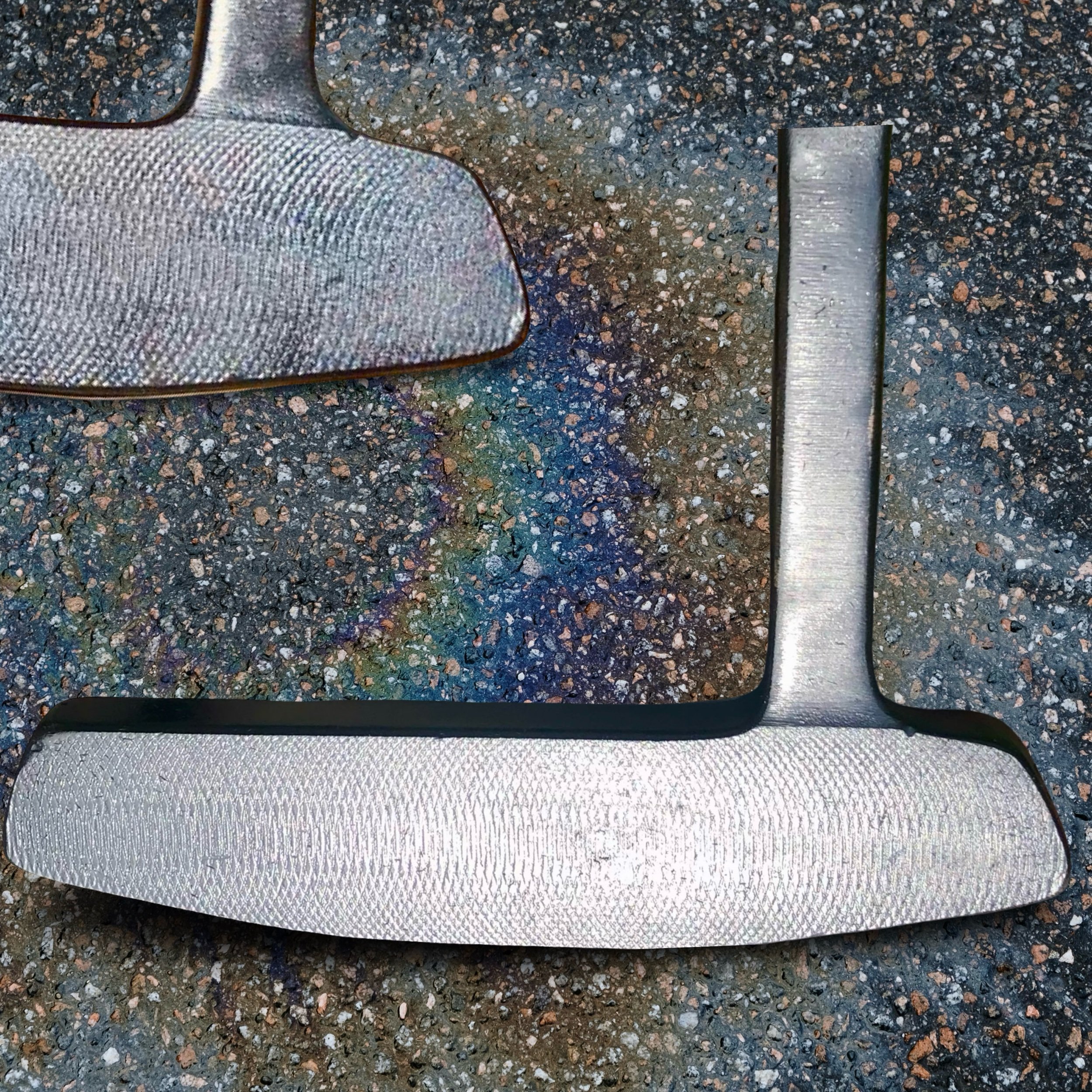 Image 4 of 8
Image 4 of 8

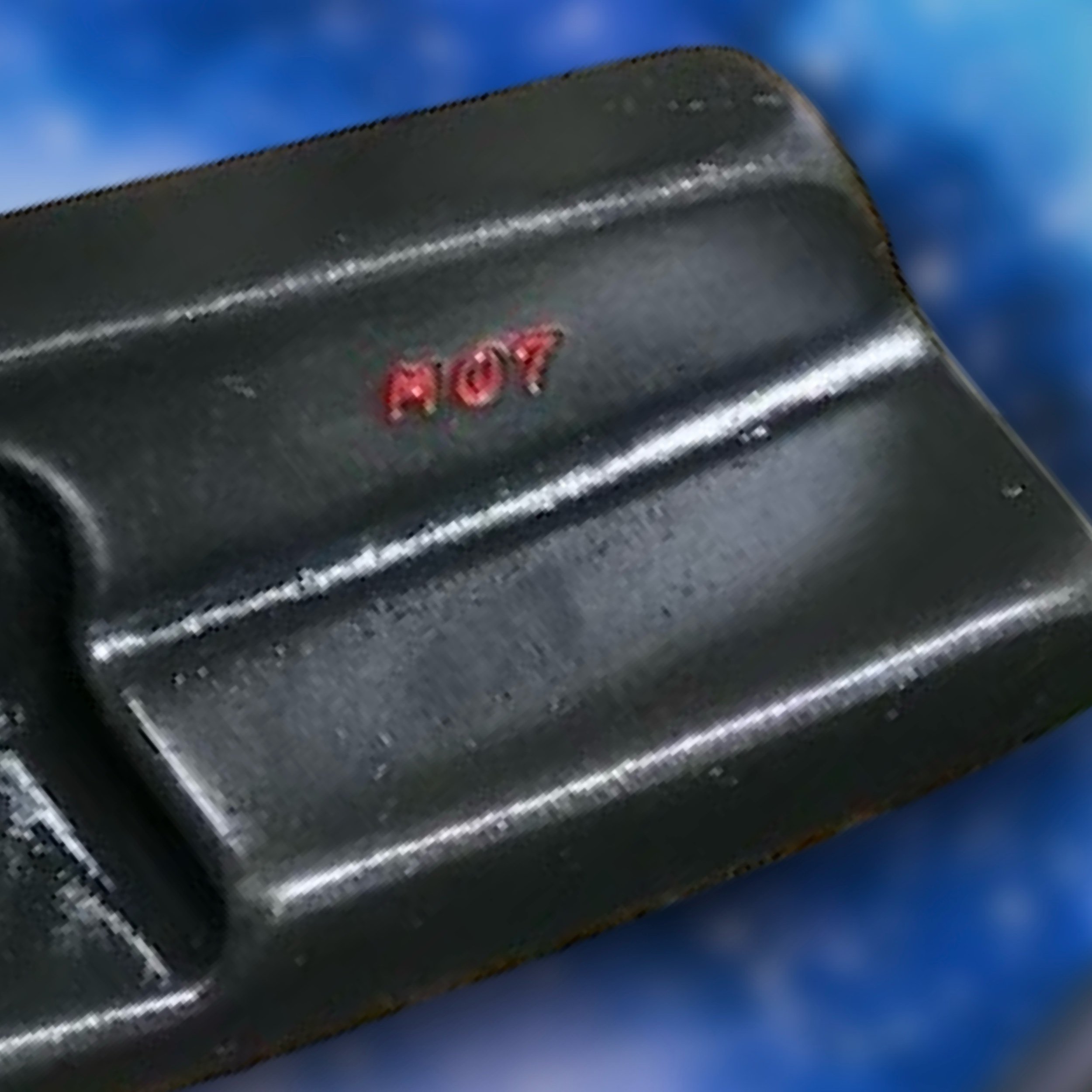 Image 5 of 8
Image 5 of 8

 Image 6 of 8
Image 6 of 8

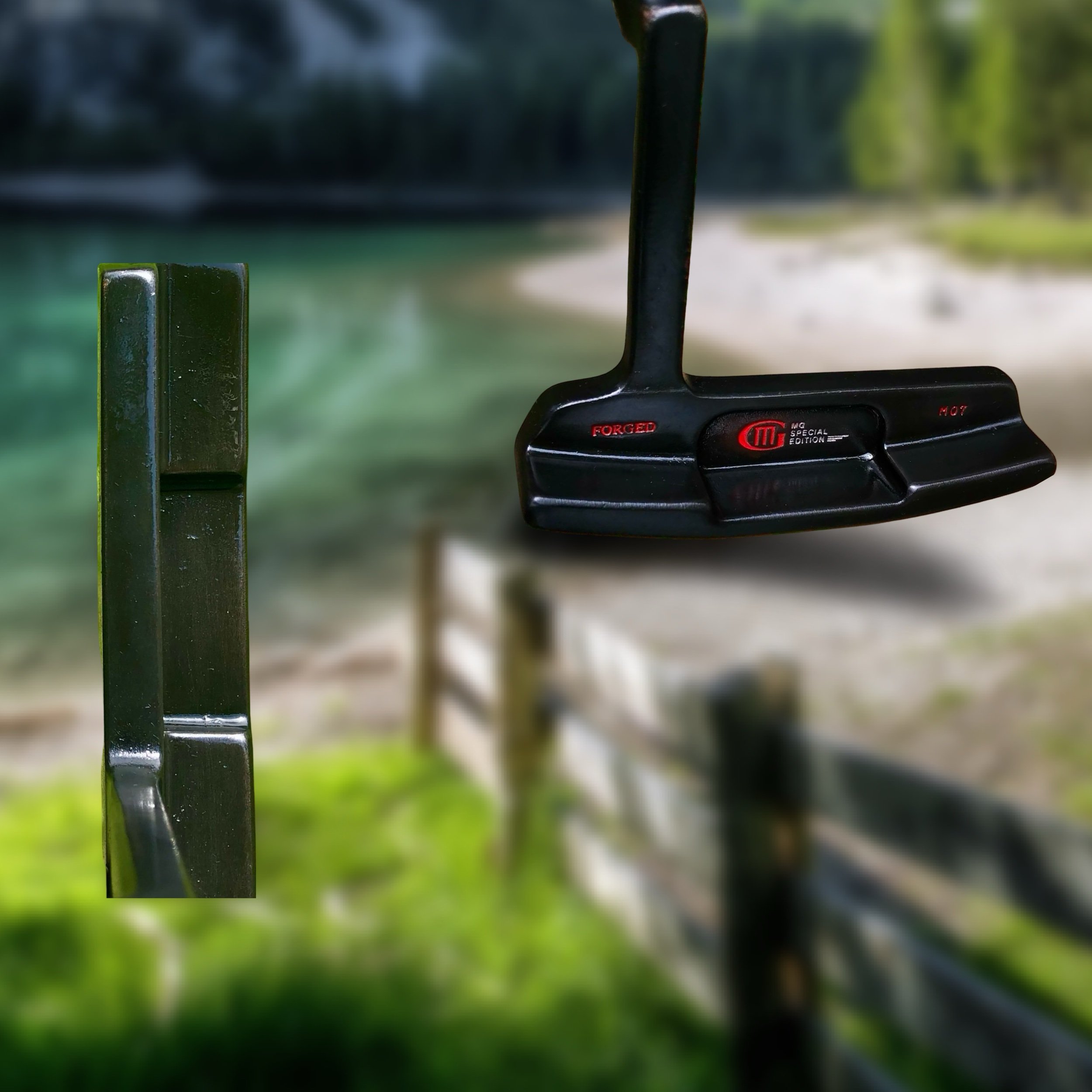 Image 7 of 8
Image 7 of 8

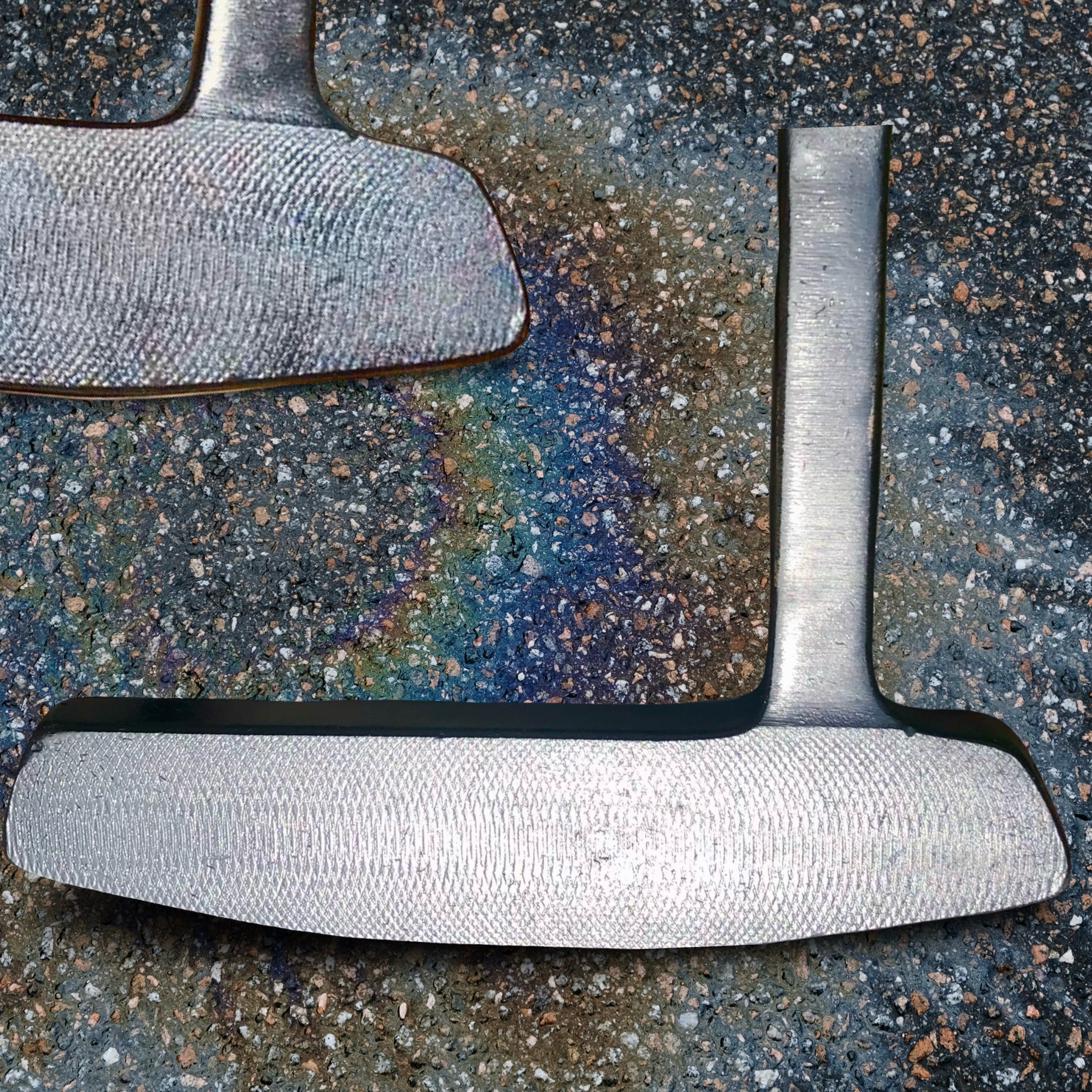 Image 8 of 8
Image 8 of 8









Miura Giken M 07 Putter (34.5”) - ASSEMBLED
Miura Giken M 07 Putter (34.5”) - ASSEMBLED
Katsuhiro Miura’s (1942-2025, RIP) approach to golf club design was rooted in a simple philosophy: “The good golfer will find me.”
He was correct, and given the range of club styles this legend designed over his 60+ year career, we’d contend that “good” is not just describing low handicappers here. If one gets really into the game, one hears about the company, and hopefully is curious enough to at dig at least a little bunny hole.
We’ll also add here that the company’s face milling, in general, tends to be underrated and we know that is hard to believe given all the hype around the brand, but it’s pretty special stuff.
Listing::
Original shaft + new Red cabretta leather Gripmaster xtra long grip.^
The new midnight (raw) finish helps highlight the lines and transitions of shape on this sweet flat stick.
^adds just a small and proportional feeling taste of counterbalance.
We normally don’t do long captions. This would be perhaps THE exception to the rule and since it was going to be as respectfully complete as we felt was warranted, we did include some less frequently mentioned stuff we hope adds some color to your read.
—————
Katsuhiro Miura, “the hands of God,” passed away on May 14, 2025, at age 82 .
His death marked the end of an extraordinary 68-year career that revolutionized golf club manufacturing and elevated forging back away from the industrial process that many OEMs seem to believe entitles them to market prices that are nuts given the dispersion in quality.
Born in 1942 in the historically steel-rich region famous for samurai sword making, Miura spent l thousands of hours working at his grinding station in the factory he built, personally touching every club head that bore his name.
He was an entrepreneur with vision and patience on top of his golfy skills.
This belief drove him to prioritize performance over marketing, craftsmanship over profit, and legacy over immediate success.
His revolutionary spin-welding technique, which joined hosels and heads through high-speed friction rather than traditional welding, became a key foundation for what many devotees worldwide recognize as “the Miura feel”—a sensation that we at Hourglass truly believe is unique and if we do have a blind spot, we can still Confidently type here that the feel is very very very distinctive.
Miura’s journey began at age 15 in 1957 when he started learning the fundamentals of golf club manufacturing. The significance of his birthplace cannot be overstated: Himeji, known as the “steel region of Japan,” had been the center of samurai sword making for centuries, This heritage would prove foundational to his approach.
After spending a decade at Kojima Iron Works learning metal processing and seven years at Kyoei mastering forging techniques, Miura founded his own company in February 1977 at age 35. His revolutionary insight was that traditional forging was “fundamentally flawed”—it couldn’t properly manipulate grain structure.
Using a memorable analogy, he explained: “It’s like if you have two glass jars. One is filled with marbles and the other is filled with sand. The marbles will vibrate at impact and that results in energy transfer being lost. The sand produces no vibration, and no loss of energy.” This led to the very specific three-stage forging process (we are not just referring to 3 strikes here) and the famous spin-welding technique that eliminated voids and created unprecedented consistency.
What set Miura apart wasn’t just technical innovation but his relentless pursuit of perfection. While competitors moved toward automation and mass production, Miura maintained tolerances of +/- 0.5 grams compared to the industry standard of 5 grams.
Until his death, he occupied the “number one chair” on the grinding line, ensuring his hands were the last to touch each club head. This wasn’t ceremonial leadership; it was active quality control that defined the brand’s DNA.
Miura’s clubs achieved what many manufacturers spend millions in marketing to accomplish: they won majors. Retief Goosen’s 2001 U.S. Open victory, Ian Woosnam’s 1991 Masters triumph, and José María Olazábal’s 1994 Masters win all came with Miura-forged irons.
Yet these publicly confirmed victories represent only a fraction of the company’s actual tournament success. For decades, Miura secretly forged clubs for major manufacturers, leading to persistent rumors about unnamed champions who achieved glory with his craftsmanship hidden beneath other brands.
The most famous of these mysteries involved Tiger Woods, with speculation that both Titleist and Nike commissioned Miura to forge Tiger’s irons. In 1998, the company produced just 500 limited-edition “Tiger Woods Replica” irons for the Japanese market The 1998 Limited Edition Titleist Japan Tiger Woods Replica Irons by Miura Giken | TourSpecGolf Blog at $5,000 per set—a testament to the reverence his craftsmanship commanded.
PUTTERS
Miura’s putters represented perhaps his purest expression of craft meeting function. While the industry embraced technological gimmicks and flashy aesthetics, Miura viewed putters as “natural landscapes to be preserved” rather than “real estate in need of development.” . His putter designs featured clean, uninterrupted metal surfaces with minimal ornamentation—just elegant gold “M” and “MG” logos and subtle stampings that spoke more to confidence than most anything else.
The technical sophistication behind this simplicity was remarkable. Miura putters were forged from single billets of premium Japanese stainless steel or soft carbon steel, creating the industry’s tightest grain structure. We really dig the M07 But we can close to tapping a few other options - like the KM-007 “The Mallet” and the beloved KM-350 (later replaced by the KM-008)
The craftsmanship process for putters mirrored his iron-making philosophy: forging rearranged the steel’s molecular structure uniformly, eliminating voids and creating what golfers described as “solid without being harsh, soft without being mushy.”
Perhaps Miura’s greatest contribution wasn’t technical but philosophical. His belief that “the pathway to creating a legacy is loving what you do” stood in stark contrast to an industry driven by quarterly sales figures and celebrity endorsements.
He never paid professionals to play his clubs, believing that if he focused on creating the world’s best forged irons, golfers would naturally discover them. This organic approach created a devoted following of players who became evangelists for the brand.
His commitment to continuous improvement over innovation was equally revolutionary. “We will never produce a new club until we can improve an existing one” became the company mantra, driving their focus on refinement rather than rushed product releases. This philosophy extended to his final design, the KM-700 irons released in 2022, which took five years to perfect and bore his red “Hanko” stamp—his personal seal of approval that marked one of many crowning achievements.
The family legacy continues through his sons Shinei and Yoshitaka, who learned at their father’s side, His grandson Kokuse, recently joined the business.
We have every reason to believe (and we surely do hope) that they maintain the same exacting standards that made Miura legendary: no conveyor belts, no mass production, no compromise on quality.
Katsuhiro Miura’s death represents more than the loss of a skilled craftsman; it marks the end of an era when individual artisans could shape entire industries through dedication to excellence.
The satisfaction of owning something crafted by master hands, the confidence that comes from equipment made without compromise—these elements of the golfing experience remain as relevant today as they were when a 15-year-old boy first learned to grind clubs in 1957.
Nope - not going down the Giken rabbit hole Here……we all just feel lucky to have worked on and played with quite a few clubs designed and produced by the company that lost its 82 year old founder this year, 25 years after this putter was released.
Miura Giken M 07 Putter (34.5”) - ASSEMBLED
Katsuhiro Miura’s (1942-2025, RIP) approach to golf club design was rooted in a simple philosophy: “The good golfer will find me.”
He was correct, and given the range of club styles this legend designed over his 60+ year career, we’d contend that “good” is not just describing low handicappers here. If one gets really into the game, one hears about the company, and hopefully is curious enough to at dig at least a little bunny hole.
We’ll also add here that the company’s face milling, in general, tends to be underrated and we know that is hard to believe given all the hype around the brand, but it’s pretty special stuff.
Listing::
Original shaft + new Red cabretta leather Gripmaster xtra long grip.^
The new midnight (raw) finish helps highlight the lines and transitions of shape on this sweet flat stick.
^adds just a small and proportional feeling taste of counterbalance.
We normally don’t do long captions. This would be perhaps THE exception to the rule and since it was going to be as respectfully complete as we felt was warranted, we did include some less frequently mentioned stuff we hope adds some color to your read.
—————
Katsuhiro Miura, “the hands of God,” passed away on May 14, 2025, at age 82 .
His death marked the end of an extraordinary 68-year career that revolutionized golf club manufacturing and elevated forging back away from the industrial process that many OEMs seem to believe entitles them to market prices that are nuts given the dispersion in quality.
Born in 1942 in the historically steel-rich region famous for samurai sword making, Miura spent l thousands of hours working at his grinding station in the factory he built, personally touching every club head that bore his name.
He was an entrepreneur with vision and patience on top of his golfy skills.
This belief drove him to prioritize performance over marketing, craftsmanship over profit, and legacy over immediate success.
His revolutionary spin-welding technique, which joined hosels and heads through high-speed friction rather than traditional welding, became a key foundation for what many devotees worldwide recognize as “the Miura feel”—a sensation that we at Hourglass truly believe is unique and if we do have a blind spot, we can still Confidently type here that the feel is very very very distinctive.
Miura’s journey began at age 15 in 1957 when he started learning the fundamentals of golf club manufacturing. The significance of his birthplace cannot be overstated: Himeji, known as the “steel region of Japan,” had been the center of samurai sword making for centuries, This heritage would prove foundational to his approach.
After spending a decade at Kojima Iron Works learning metal processing and seven years at Kyoei mastering forging techniques, Miura founded his own company in February 1977 at age 35. His revolutionary insight was that traditional forging was “fundamentally flawed”—it couldn’t properly manipulate grain structure.
Using a memorable analogy, he explained: “It’s like if you have two glass jars. One is filled with marbles and the other is filled with sand. The marbles will vibrate at impact and that results in energy transfer being lost. The sand produces no vibration, and no loss of energy.” This led to the very specific three-stage forging process (we are not just referring to 3 strikes here) and the famous spin-welding technique that eliminated voids and created unprecedented consistency.
What set Miura apart wasn’t just technical innovation but his relentless pursuit of perfection. While competitors moved toward automation and mass production, Miura maintained tolerances of +/- 0.5 grams compared to the industry standard of 5 grams.
Until his death, he occupied the “number one chair” on the grinding line, ensuring his hands were the last to touch each club head. This wasn’t ceremonial leadership; it was active quality control that defined the brand’s DNA.
Miura’s clubs achieved what many manufacturers spend millions in marketing to accomplish: they won majors. Retief Goosen’s 2001 U.S. Open victory, Ian Woosnam’s 1991 Masters triumph, and José María Olazábal’s 1994 Masters win all came with Miura-forged irons.
Yet these publicly confirmed victories represent only a fraction of the company’s actual tournament success. For decades, Miura secretly forged clubs for major manufacturers, leading to persistent rumors about unnamed champions who achieved glory with his craftsmanship hidden beneath other brands.
The most famous of these mysteries involved Tiger Woods, with speculation that both Titleist and Nike commissioned Miura to forge Tiger’s irons. In 1998, the company produced just 500 limited-edition “Tiger Woods Replica” irons for the Japanese market The 1998 Limited Edition Titleist Japan Tiger Woods Replica Irons by Miura Giken | TourSpecGolf Blog at $5,000 per set—a testament to the reverence his craftsmanship commanded.
PUTTERS
Miura’s putters represented perhaps his purest expression of craft meeting function. While the industry embraced technological gimmicks and flashy aesthetics, Miura viewed putters as “natural landscapes to be preserved” rather than “real estate in need of development.” . His putter designs featured clean, uninterrupted metal surfaces with minimal ornamentation—just elegant gold “M” and “MG” logos and subtle stampings that spoke more to confidence than most anything else.
The technical sophistication behind this simplicity was remarkable. Miura putters were forged from single billets of premium Japanese stainless steel or soft carbon steel, creating the industry’s tightest grain structure. We really dig the M07 But we can close to tapping a few other options - like the KM-007 “The Mallet” and the beloved KM-350 (later replaced by the KM-008)
The craftsmanship process for putters mirrored his iron-making philosophy: forging rearranged the steel’s molecular structure uniformly, eliminating voids and creating what golfers described as “solid without being harsh, soft without being mushy.”
Perhaps Miura’s greatest contribution wasn’t technical but philosophical. His belief that “the pathway to creating a legacy is loving what you do” stood in stark contrast to an industry driven by quarterly sales figures and celebrity endorsements.
He never paid professionals to play his clubs, believing that if he focused on creating the world’s best forged irons, golfers would naturally discover them. This organic approach created a devoted following of players who became evangelists for the brand.
His commitment to continuous improvement over innovation was equally revolutionary. “We will never produce a new club until we can improve an existing one” became the company mantra, driving their focus on refinement rather than rushed product releases. This philosophy extended to his final design, the KM-700 irons released in 2022, which took five years to perfect and bore his red “Hanko” stamp—his personal seal of approval that marked one of many crowning achievements.
The family legacy continues through his sons Shinei and Yoshitaka, who learned at their father’s side, His grandson Kokuse, recently joined the business.
We have every reason to believe (and we surely do hope) that they maintain the same exacting standards that made Miura legendary: no conveyor belts, no mass production, no compromise on quality.
Katsuhiro Miura’s death represents more than the loss of a skilled craftsman; it marks the end of an era when individual artisans could shape entire industries through dedication to excellence.
The satisfaction of owning something crafted by master hands, the confidence that comes from equipment made without compromise—these elements of the golfing experience remain as relevant today as they were when a 15-year-old boy first learned to grind clubs in 1957.
Nope - not going down the Giken rabbit hole Here……we all just feel lucky to have worked on and played with quite a few clubs designed and produced by the company that lost its 82 year old founder this year, 25 years after this putter was released.
Miura Giken M 07 Putter (34.5”) - ASSEMBLED
Katsuhiro Miura’s (1942-2025, RIP) approach to golf club design was rooted in a simple philosophy: “The good golfer will find me.”
He was correct, and given the range of club styles this legend designed over his 60+ year career, we’d contend that “good” is not just describing low handicappers here. If one gets really into the game, one hears about the company, and hopefully is curious enough to at dig at least a little bunny hole.
We’ll also add here that the company’s face milling, in general, tends to be underrated and we know that is hard to believe given all the hype around the brand, but it’s pretty special stuff.
Listing::
Original shaft + new Red cabretta leather Gripmaster xtra long grip.^
The new midnight (raw) finish helps highlight the lines and transitions of shape on this sweet flat stick.
^adds just a small and proportional feeling taste of counterbalance.
We normally don’t do long captions. This would be perhaps THE exception to the rule and since it was going to be as respectfully complete as we felt was warranted, we did include some less frequently mentioned stuff we hope adds some color to your read.
—————
Katsuhiro Miura, “the hands of God,” passed away on May 14, 2025, at age 82 .
His death marked the end of an extraordinary 68-year career that revolutionized golf club manufacturing and elevated forging back away from the industrial process that many OEMs seem to believe entitles them to market prices that are nuts given the dispersion in quality.
Born in 1942 in the historically steel-rich region famous for samurai sword making, Miura spent l thousands of hours working at his grinding station in the factory he built, personally touching every club head that bore his name.
He was an entrepreneur with vision and patience on top of his golfy skills.
This belief drove him to prioritize performance over marketing, craftsmanship over profit, and legacy over immediate success.
His revolutionary spin-welding technique, which joined hosels and heads through high-speed friction rather than traditional welding, became a key foundation for what many devotees worldwide recognize as “the Miura feel”—a sensation that we at Hourglass truly believe is unique and if we do have a blind spot, we can still Confidently type here that the feel is very very very distinctive.
Miura’s journey began at age 15 in 1957 when he started learning the fundamentals of golf club manufacturing. The significance of his birthplace cannot be overstated: Himeji, known as the “steel region of Japan,” had been the center of samurai sword making for centuries, This heritage would prove foundational to his approach.
After spending a decade at Kojima Iron Works learning metal processing and seven years at Kyoei mastering forging techniques, Miura founded his own company in February 1977 at age 35. His revolutionary insight was that traditional forging was “fundamentally flawed”—it couldn’t properly manipulate grain structure.
Using a memorable analogy, he explained: “It’s like if you have two glass jars. One is filled with marbles and the other is filled with sand. The marbles will vibrate at impact and that results in energy transfer being lost. The sand produces no vibration, and no loss of energy.” This led to the very specific three-stage forging process (we are not just referring to 3 strikes here) and the famous spin-welding technique that eliminated voids and created unprecedented consistency.
What set Miura apart wasn’t just technical innovation but his relentless pursuit of perfection. While competitors moved toward automation and mass production, Miura maintained tolerances of +/- 0.5 grams compared to the industry standard of 5 grams.
Until his death, he occupied the “number one chair” on the grinding line, ensuring his hands were the last to touch each club head. This wasn’t ceremonial leadership; it was active quality control that defined the brand’s DNA.
Miura’s clubs achieved what many manufacturers spend millions in marketing to accomplish: they won majors. Retief Goosen’s 2001 U.S. Open victory, Ian Woosnam’s 1991 Masters triumph, and José María Olazábal’s 1994 Masters win all came with Miura-forged irons.
Yet these publicly confirmed victories represent only a fraction of the company’s actual tournament success. For decades, Miura secretly forged clubs for major manufacturers, leading to persistent rumors about unnamed champions who achieved glory with his craftsmanship hidden beneath other brands.
The most famous of these mysteries involved Tiger Woods, with speculation that both Titleist and Nike commissioned Miura to forge Tiger’s irons. In 1998, the company produced just 500 limited-edition “Tiger Woods Replica” irons for the Japanese market The 1998 Limited Edition Titleist Japan Tiger Woods Replica Irons by Miura Giken | TourSpecGolf Blog at $5,000 per set—a testament to the reverence his craftsmanship commanded.
PUTTERS
Miura’s putters represented perhaps his purest expression of craft meeting function. While the industry embraced technological gimmicks and flashy aesthetics, Miura viewed putters as “natural landscapes to be preserved” rather than “real estate in need of development.” . His putter designs featured clean, uninterrupted metal surfaces with minimal ornamentation—just elegant gold “M” and “MG” logos and subtle stampings that spoke more to confidence than most anything else.
The technical sophistication behind this simplicity was remarkable. Miura putters were forged from single billets of premium Japanese stainless steel or soft carbon steel, creating the industry’s tightest grain structure. We really dig the M07 But we can close to tapping a few other options - like the KM-007 “The Mallet” and the beloved KM-350 (later replaced by the KM-008)
The craftsmanship process for putters mirrored his iron-making philosophy: forging rearranged the steel’s molecular structure uniformly, eliminating voids and creating what golfers described as “solid without being harsh, soft without being mushy.”
Perhaps Miura’s greatest contribution wasn’t technical but philosophical. His belief that “the pathway to creating a legacy is loving what you do” stood in stark contrast to an industry driven by quarterly sales figures and celebrity endorsements.
He never paid professionals to play his clubs, believing that if he focused on creating the world’s best forged irons, golfers would naturally discover them. This organic approach created a devoted following of players who became evangelists for the brand.
His commitment to continuous improvement over innovation was equally revolutionary. “We will never produce a new club until we can improve an existing one” became the company mantra, driving their focus on refinement rather than rushed product releases. This philosophy extended to his final design, the KM-700 irons released in 2022, which took five years to perfect and bore his red “Hanko” stamp—his personal seal of approval that marked one of many crowning achievements.
The family legacy continues through his sons Shinei and Yoshitaka, who learned at their father’s side, His grandson Kokuse, recently joined the business.
We have every reason to believe (and we surely do hope) that they maintain the same exacting standards that made Miura legendary: no conveyor belts, no mass production, no compromise on quality.
Katsuhiro Miura’s death represents more than the loss of a skilled craftsman; it marks the end of an era when individual artisans could shape entire industries through dedication to excellence.
The satisfaction of owning something crafted by master hands, the confidence that comes from equipment made without compromise—these elements of the golfing experience remain as relevant today as they were when a 15-year-old boy first learned to grind clubs in 1957.
Nope - not going down the Giken rabbit hole Here……we all just feel lucky to have worked on and played with quite a few clubs designed and produced by the company that lost its 82 year old founder this year, 25 years after this putter was released.
